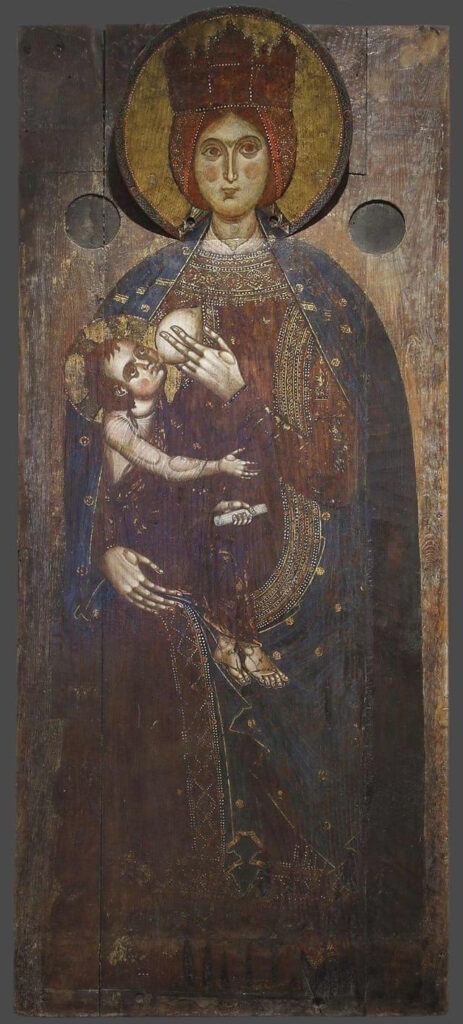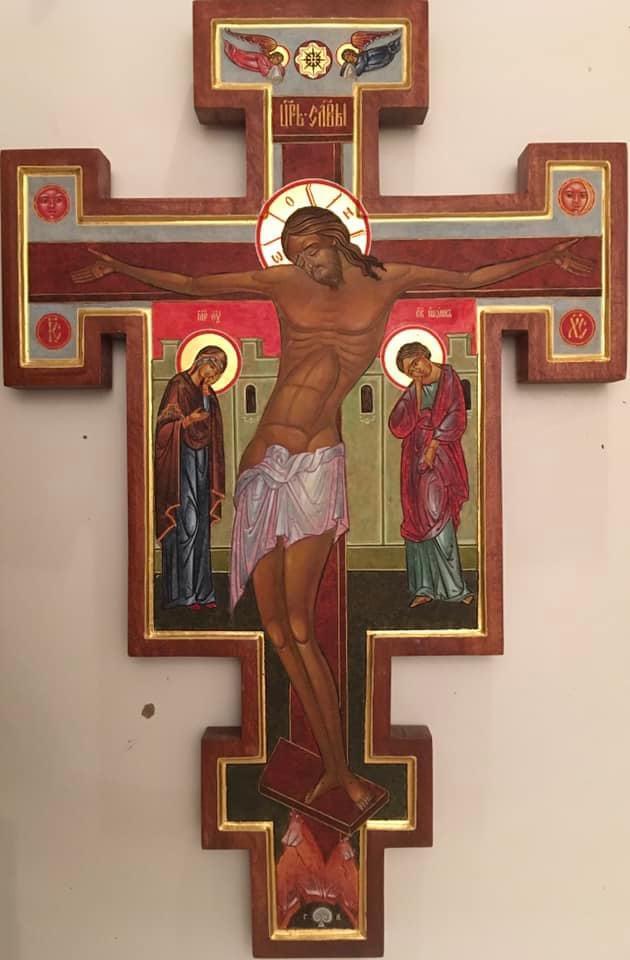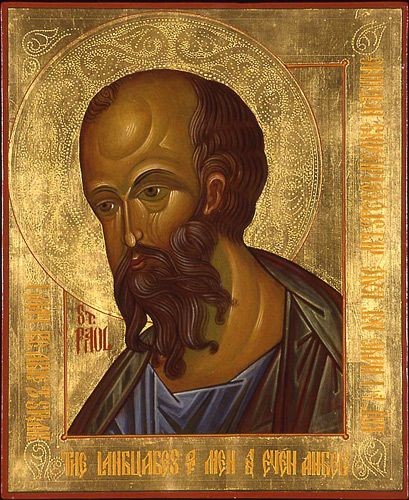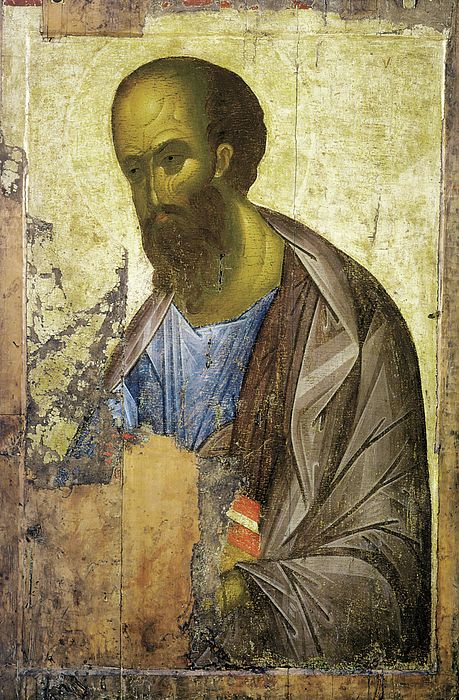
And I, brothers and sisters, was able to speak to you not as spiritual people but only as carnal people, as infants in Christ. I gave you milk to drink, not substantial food, because you were not yet capable, nor are you capable until now, for you are fleshy people. (1 Cor. 3:1-3)
In the ancient world, milk-blood-semen were all thought to be the same liquid but warmed to differing temperatures by different internal organs. Blood was the coldest of these and the basic, most natural form of this liquid. Milk was blood, warmed and made frothy in a woman’s breasts. Semen was blood, made even warmer and frothier in a man’s testes. According to this biological idea, when a mother was nursing her child, she was feeding the baby with her own blood.
Because blood and milk were identical, the correspondence of the Virgin’s milk and Christ’s blood was important to early and medieval Christians. The Virgin’s blood becomes milk in her breasts; she nurses Christ, feeding him her warm and frothy blood; he drinks this frothy blood, which becomes the blood in his own veins. Medieval images of the Nursing Madonna (Madonna lactans) are fundamentally eucharistic images, celebrating the identity of the Virgin’s milk with Christ’s blood; she feeds him with her body which becomes his Body and he feeds the Church with his Body and Blood in the Eucharist.
There is no more vivid and elaborate exposition of 1 Corinthians 3 in early Christian literature than that found in Clement’s Paedagogus 1.6…. By combining Galatians 3:28 and 1 Corinthians 3, Clement sets the foundation for his argument that all Christians are already spiritual…and, as a result, milk-drinking infants cannot be viewed as equivalent to “carnal” Christians. Rather, milk is the food of all Christians who “seek our mother, the church.”
John David Penniman, Raised on Christian Milk
Not only did a mother’s milk (blood) provide sustenance to her baby, the infant received religious and ethnic formation as well by ingesting his/her mother’s identity via the milk-blood. This is why receiving Holy Communion was so important: to receive Christ’s blood was to be shaped and formed by his identity, according to St. Gregory of Nyssa.
Discover more about this fascinating subject in Raised on Christian Milk: Food and the Formation of the Soul in Early Christianity by John David Penniman (Yale University Press, 2017).



